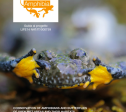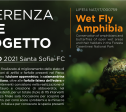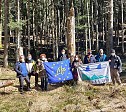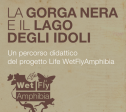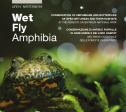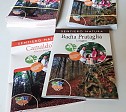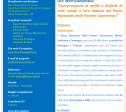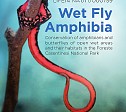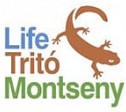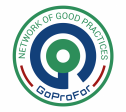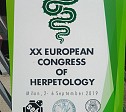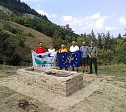-
Download the final publication of the project
You can download the final publication of our LIFE project at this link, from the Products section of our website, or by clicking on the cover image below.
-
LIFE WetFlyAmphibia final event
We are pleased to communicate and invite you to the final event of our LIFE project.
It will be a 3-day event from Sunday 11 July to Tuesday 13 in Santa Sofia (FC) and surroundings, with activities for children and families, musical performances, conferences for the general public, field trips and a conference with in-depth technical sessions on themes addressed by our project.
In order to participate in the various activities scheduled you can register by filling out the following form:
https://forms.gle/QSDmCBPixWZb51zr5
Monday's conference will also be broadcast live on the National Park Facebook page.
Here is the program:
MORE INFORMATION: 0575.503029 - 0543.971375
info@parcoforestecasentinesi.it
info@lifewetflyamphibia.eu
www.parcoforestecasentinesi.it -
Monitoring visit
The usual annual monitoring visit of our LIFE project took place on 23 and 24 March.
 A somewhat special visit, with only a few of us in attendance at the Officine Capodarno facilities and most of us remotely connected.
A somewhat special visit, with only a few of us in attendance at the Officine Capodarno facilities and most of us remotely connected.
However, we were able to visit several intervention sites created thanks also to the precious collaboration of the farmers who are concessionaires of the pastures in the Foreste Casentinesi, Monte Falterona e Campigna National Park, and from the project partners of the Carabinieri for Biodiversity Department of Pratovecchio and the Unione dei Comuni Montani del Casentino.
A big thank you also goes to the partners University of Pavia, University of Bologna and DREAm Italia.
The most felt, however, is for our new monitor, which like all those that preceded him, dispensed excellent advice to improve our actions more and more and encouraged us to do better and better.


-
A new educational path in the Park dedicated to LIFE WetFlyAmphibia
A relatively short path in the "high lands" of the Park, with many reasons of environmental as well as archeological and evocative interest.
-
Layman's report
The first online version of Layman's project report is available.
A product that summarizes what LIFE WetFlyAmphibia has done to date in a simple and captivating way.


-
LIFE WFA educational path cards
The new cards of the didactic paths dedicated to LIFE WetFlyAmphibia are downloadable from our website.
The paths are part of the Nature Trails of the Foreste Casentinesi, Monte Falterona and Campigna National Park.
-
LIFE project of the month
Our project has been selected by the Ministry of the Environment and the Protection of the Territory and the Sea as the LIFE project of the month.
You can read and download our presentation directly from the Ministry website at this link.

-
New folding brochure
We are very happy to present the new brochure of our project.
After a few years it seemed right to renew the graphic appearance of this product, also because thanks to your great interest in what we do, the first edition is over.
At the moment, unfortunately, we can only present it to you digitally, but we are sure that we will be able to meet very soon, deliver this new product that talks about what we do, the LIFE program and the area in which we operate, and maybe even embrace us.
The pdf of the brochure can be downloaded here.

-
23/10/2019 Networking with LIFE Tritó Montseny
In these days we were hosted by Xarxa de Parcs Naturals to visit the interventions carried out by LIFE Tritó Montseny and present our project.
It was a wonderful and extremely useful experience, which allowed us to share and learn about active conservation techniques towards extremely threatened amphibian species in Europe.
Find out more about our frinds of LIFE Tritó Monseny!




-
18/10/2019 Online the good practise database of LIFE GoProFor
The LIFE GoProFor analysis of LIFE projects and the good practices (GPs) extraction and description started on January 2019. To date, 100 good practises are already inserted in the database: 79 of them are derived from Italian LIFE projects, while 21 from projects developed in other European countries (15 GPs from French projects, 4 from Greece, 1 from Spain and 1 from Slovenia).
At the moment there are 3 good practices deriving from our LIFE Wetflyamphibia which are part of this important LIFE project that aims to "distil" the good forest management practices from LIFE projects selected at European level:
- Ex-situ reproduction protocol of the Apennine yellow-bellied toad (Bombina pachypus) and restocking of the species in suitable sites
- Egg translocation techniques for restocking of northern spectacled salamander (Salamandrina perspicillata)
- Techniques for creating wetlands for forest amphibians: Bombina pachypus and Triturus carnifex
Visit the database and discover all the good practices collected so far!

-
04/09/2019 SEH2019 European Congress of Herpetology
Today we presented our project at te XX European Congress of Herpetology in Milan to Societas Europaea Herpetologica experts coming from all over Europe.
It was a privilege and a real pleasure to be able to compare and share experiences talking about the actions we are carrying out in the Foreste Casentinesi, Monte Falterona and Campigna National Park.


-
Networking
NETWORKING EVENT
The two LIFE projects TritoMontseny an Auenamphibien came to visit us on 29, 30 and 31 of August.
A wonderful experience of growth and sharing of experiences between projects aimed at the conservation of amphibians throughout Europe.
The LIFE TritoMontseny project takes place in Catalonia in the Parc Natural del Montseny and deals with a new rare species: the Montseny newt, an endemic species with very few known presence stations.
The LIFE Auenamphibien project deals with the conservation of different species of amhibiansin danger in central-northern Europe lowlands.
Visiting the interventions in the Foreste Casentinesi, Monte Falterona and Campigna Nationala Park , together with the representatives of these two projects, we were able to observe with great joy the presence of individuals of Apennine yellow-bellied toad reintroduced by the project, a clear sign of the effectiveness of the actions we are carrying forward!








